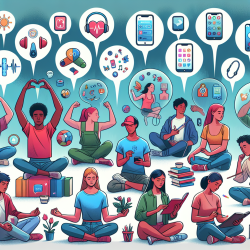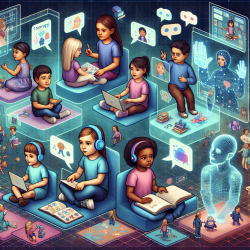Introduction
In the digital age, mobile health (mHealth) has emerged as a promising solution to address the mental health challenges faced by youths. The research article "Understanding Mobile Health and Youth Mental Health: Scoping Review" provides valuable insights into how mHealth interventions can support youth mental health. This blog explores the key findings and suggests practical ways for practitioners to enhance their skills and services using mHealth technologies.
The Growing Need for Youth-Centered Mental Health Solutions
With 75% of mental health disorders manifesting between the ages of 12 and 24, the need for effective mental health solutions for youths is critical. Traditional mental health services often face barriers such as accessibility and stigma. mHealth offers a way to bridge these gaps by providing accessible, youth-friendly mental health support.
Key Findings from the Research
The scoping review synthesized evidence from 151 studies on mHealth interventions for youth mental health. Here are some notable findings:
- Diverse Delivery Modes: mHealth interventions are delivered through various modes, including web pages, smartphone apps, and virtual reality. Web-based tools showed the strongest evidence for improving mental health conditions in youths.
- Targeted Conditions: The studies primarily focused on depression, anxiety, and general mental health concerns, highlighting the need for more research on self-harm, interpersonal violence, and substance use disorders.
- Global Disparities: Most studies originated from developed countries, indicating a need for more research in low- and middle-income countries where mHealth could be particularly beneficial.
- Engagement and Measurement: Youth engagement in mHealth research was limited, and there was a lack of standardized measurement tools for assessing outcomes.
Practical Applications for Practitioners
Practitioners can leverage the findings from this research to enhance their mHealth interventions and improve youth mental health outcomes:
- Incorporate Diverse Technologies: Utilize a mix of web-based tools, smartphone apps, and emerging technologies like VR to cater to diverse youth preferences and needs.
- Focus on Underrepresented Areas: Develop interventions targeting self-harm, interpersonal violence, and substance use disorders to address gaps in current mHealth offerings.
- Engage Youths in Development: Involve youths in the design and development of mHealth tools to ensure they meet the specific needs and preferences of the target population.
- Adopt Global Perspectives: Consider adapting successful mHealth interventions from high-income countries for use in lower-resourced settings, ensuring accessibility and cultural relevance.
- Standardize Measurement Tools: Collaborate with researchers to develop standardized measurement tools that accurately assess the impact of mHealth interventions on youth mental health.
Encouraging Further Research
While the scoping review provides valuable insights, there is a need for further research to fill existing gaps and enhance the effectiveness of mHealth interventions. Practitioners are encouraged to engage in or support research efforts that prioritize youth engagement, equity, diversity, and inclusion.
Conclusion
mHealth technologies hold significant potential to transform youth mental health services by providing accessible, effective, and youth-centered support. By implementing the findings from the "Understanding Mobile Health and Youth Mental Health: Scoping Review," practitioners can enhance their skills and contribute to the development of innovative solutions that meet the evolving needs of youths.
To read the original research paper, please follow this link: Understanding Mobile Health and Youth Mental Health: Scoping Review.










